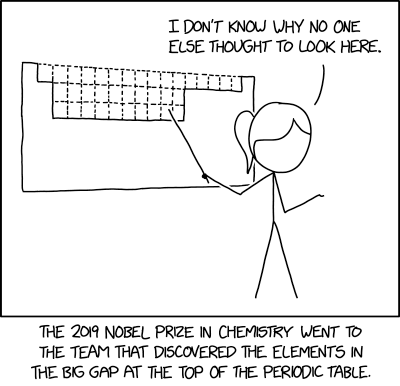8:57 AM
@SanchayanDutta ah, so either they changed the wording since then, or the wording in the close queue is different than the one that actually ends up in the closed post
9:14 AM
by the way, I actually think one can answer that question in much more generality. Consider the problem of, given an Hermitian (or symmetric if real) $B$, asking for the $A$ such that $B=A^\dagger A$. It might not be immediately obvious, but this problem is essentially equivalent to that of finding a purification for a given state $\rho$, which can be solved in full generality thinking in terms of the SVD of $A$
Anonymous
9:28 AM
@glS Uh, those old-post closures are generally done by the CRUDE room fellows. If I recall correctly, there was an active attempt to close all old homework-y questions even if they had answers, to urge people to provide more context and attempts in their questions and to prevent users from gaining reputation by answering low-hanging fruits. To be fair though, I hadn't put much effort into writing that question!
Anonymous
@SanchayanDutta eh, the Cholesky is a more special case I think, you want to use lower-triangular matrices in that one.
@SanchayanDutta ah, I wrote that answer more recently than I thought, though it's answering to a super-old post: physics.stackexchange.com/a/506747/58382
Anonymous
9:42 AM
the gist is that, given $B$ (you have to assume it's positive for $B=A^\dagger A$ to be possible) with eigendecomposition $B=\sum_k p_k |u_k\rangle\!\langle u_k|$ where $p_k\ge0$, the set of $A$ such that $B=A^\dagger A$ is the set of matrices whose SVD reads $A=\sum_k \sqrt{p_k}|v_k\rangle\!\langle u_k|$ (that is, the set of matrices of this form for arbitrary orthonormal bases $\{|v_k\rangle\}$
Anonymous
Anonymous
9:58 AM
> Eq. (B) makes it very clear what the possible purifications of 𝜌 are: the freedom is all and only in the choice of an orthonormal set of rank(𝜌) vectors from some arbitrary ancillary space (with the only caveat that this space needs to be large enough to accommodate this number of orthogonal elements).
Anonymous
10:36 AM
13 hours later…
« first day (577 days earlier) ← previous day next day → last day (1650 days later) »

